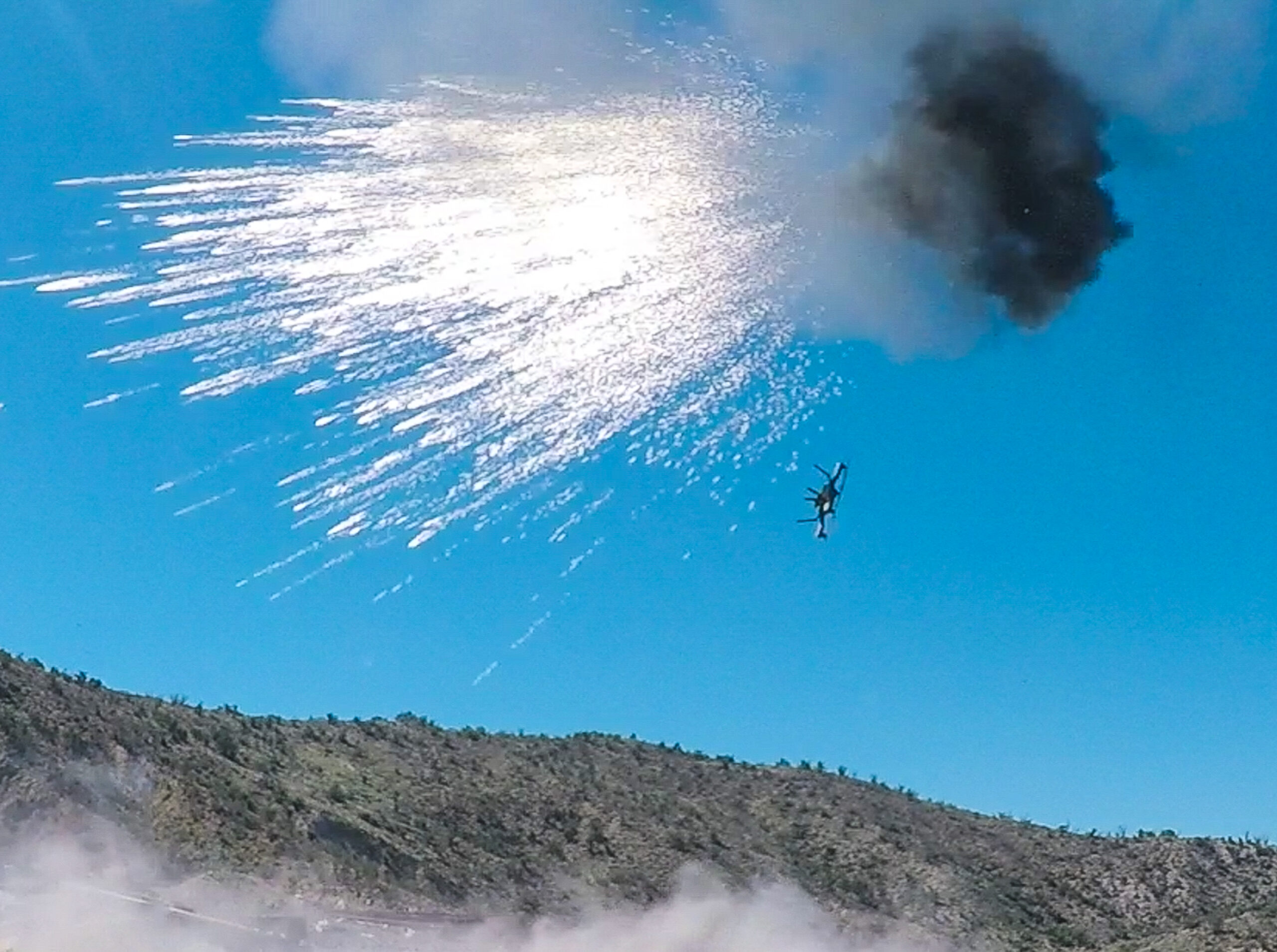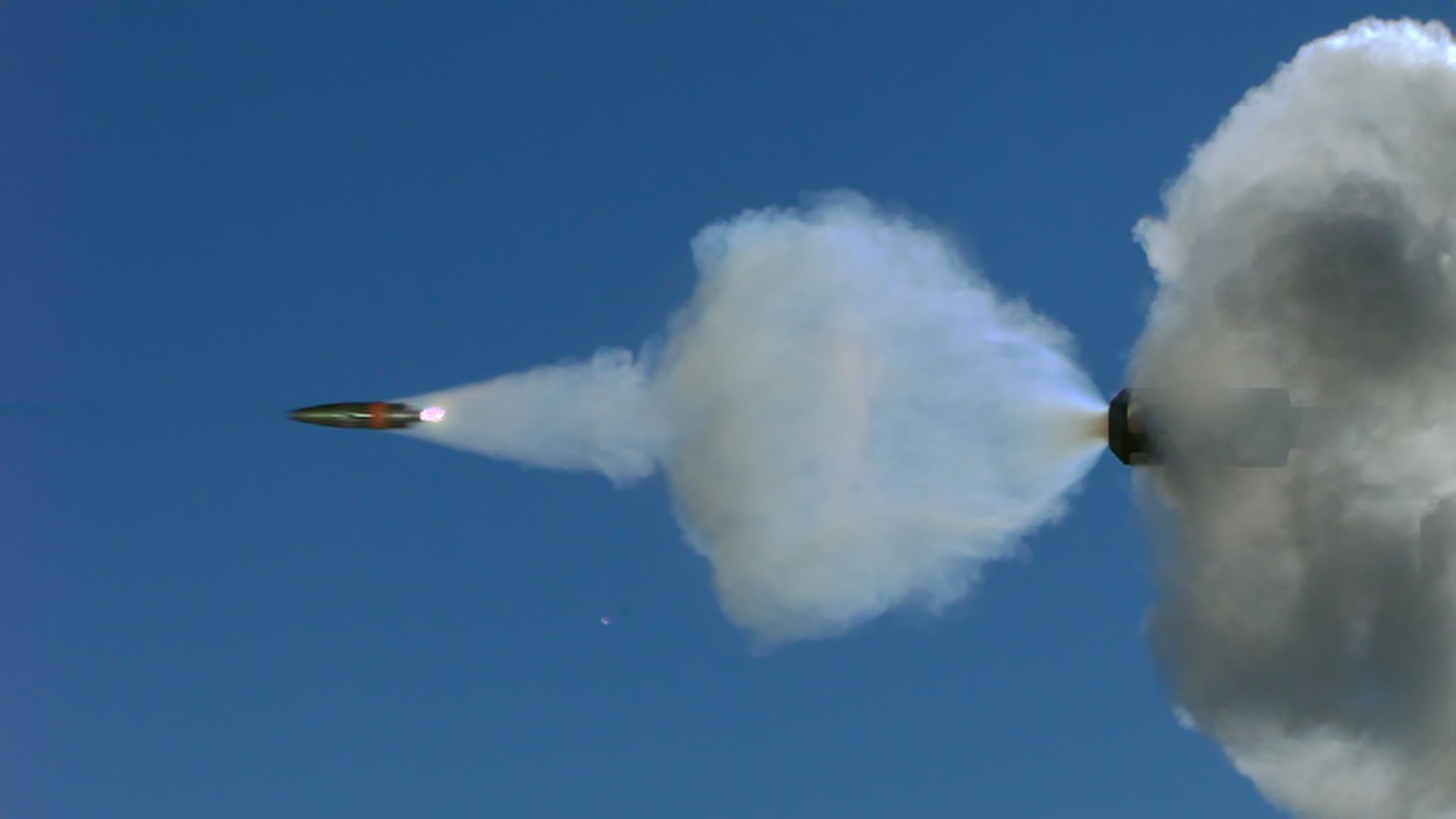
Northrop Grumman’s advanced ammunition addresses emerging threats, such as drones. Photo courtesy of Northrop Grumman.
In this Q&A with Rylan Harris, director of advanced ammunition for Northrop Grumman’s Armament Systems business unit, we discuss: how electronics give ammunition new capabilities and create their own energy, and are designed to counter threats such as anti-tank missile teams.
Breaking Defense: For the purpose of this conversation, we’re talking about medium caliber 20, 25, 30, and 40mm ammunition. How do you define “advanced ammunition” and how is it different from conventional ammunition in the current inventory?

Rylan Harris, director of advanced ammunition for Northrop Grumman’s Armament Systems business unit.
Harris: Let me start by saying that we’ve been in medium caliber ammunition production for over 30 years, and each year we produce about 5 million rounds of ammunition. We’re one of the two foremost suppliers of medium caliber ammunition to the US government and our allies.
Medium caliber conventional ammunition is used in many US government and allied platforms. This is direct fire ammunition used in engagements ranging from aircraft firing air to air and air to ground, to ground forces such as Bradley Fighting Vehicles and Stryker Infantry Carriers taking out ground-based targets.
Conventional ammunition is mostly mechanically or chemically fuzed which initiates the explosives.
Advanced ammunition, on the other hand, includes electronic components onboard each of the projectiles that give the round advanced functionality. Several types of advanced ammunition let the user program to do certain functions such as point detonate on a target, penetrate into the target then detonate, or proximity airburst when it sees a target.
Advanced ammunition includes onboard electronics that open the aperture of the capabilities that ammunition can do. To achieve this additional functionality, power sources are now required on board these projectiles to run the electronics as they’re traveling down range.

Northrop Grumman’s Mk310 30x173mm air-bursting ammunition defeats troops in defilade. Photo courtesy of Northrop Grumman.
Breaking Defense: The threat scenario now includes longer-range, higher-lethality weapons such as armor-penetrating anti-tank guided missiles (ATGMs). While those weapons are not ammunition, the advanced ammunition we’re discussing is designed to take out those types of threats. Please explain.
Harris: ATGMs are a serious threat to our Bradley Fighting Vehicles and Stryker platforms, and the threat of ATGM teams is one of the reasons advanced ammunition emerged. We needed better ammunition to be able to take out the ATGM teams at longer distances to keep our forces safe.
Breaking Defense: ATGM teams operate from tactical wheeled vehicles so couldn’t they be taken out with conventional ammunition?
Harris: We’re seeing them even more mobile than that with shoulder-based effectors similar to the Javelin anti-tank weapons system. The range of those have become longer, and we’re seeing that the ATGM teams are engaging our armed forces at the maximum range that our platforms are able to shoot conventional ammunition.
These ATGM teams are what’s called defilade targets that are behind cover. We needed more suitable ammunition for counter-defilade and taking out targets hiding behind objects that conventional ammunition couldn’t reach.

Northrop Grumman’s advanced ammunition works in conjunction with its Bushmaster Chain Guns, bringing enhanced capabilities to defeat near-peer threats. Photo courtesy of Northrop Grumman.
Breaking Defense: In partnership with the US Army, you’re developing several new advanced ammunition types for the Bushmaster Chain Gun, an autocannon found on many U.S. and allied combat vehicles, ships, and attack aircraft. Describe the new ammunition types.
Harris: I put advanced ammunition in three lanes: programmable airburst, proximity airburst, and guided munitions. The need for all three of these lanes address emerging threats that couldn’t be defeated otherwise.
Programmable airburst ammunition is geared toward counter defilade targets we mentioned, along with semi-armored targets, and structures. The programmable family of ammunition lets you decide what functionality or what effect on target you want to have. Do you want the round to airburst, meaning do you want the airburst in front of, over, or behind a target? Do you want it to point detonate — hit the target and go off? Or would you like a delay function called point detonate delay to penetrate the wall of a building and then airburst on the other side of the wall.
The gun system will send a message to the round specifying the mode, fire the round, and the round counts the turns that it’s making because ammunition spins as it’s going down range, providing an accurate assessment of where it is in space so it can airburst at a very specific place down range.
When you have targets such as an ATGM team that could be in a trench or behind a rock, you can laze the target, shoot to the side or shoot over, and airburst to take out that target.
Lane number two is proximity ammunition. It is an ammunition solution to counter drones. With the previous category, you have to laze the target, program the ammunition, and send it down range. There’s a certain amount of time delay. That’s not a problem for ground-based targets, but if you have a fast maneuvering drone, by the time you laze the target, program, and shoot the round, the drone has flown to a different spot.
You need something that is on-the-spot reactive, and that’s where proximity ammunition comes into play. It’s got a prox sensor on the front and there’s no pre-programming involved. When the round is fired, it flies down range and searches for a target with its prox sensor. When a target comes within a specific distance to the round, it initiates an airburst. It’s very effective in counter UAS situations.
Our third lane is guided. Where we see the future of ammunition is in the ability to generate power for these advanced electronics. A portion of our projectile is spinning and creating power.
In addition to powering the sensors onboard these rounds such as a prox sensor, we can play with the aero-ballistic characteristics of that spinning portion of the round. Think of it like a round spinning in one direction and a backend piece that’s spinning in a different direction and creating power. We can then start directing that backend to do specific movements, which allows us to guide the round.
We’re not talking about guiding a bullet around corners, but it allows us to remove dispersion errors and go after potential moving targets with this ammunition.
In certain threat instances such as a UAS swarm, you can engage targets and move to the next ones before you have defeated your previous target, knowing that your guided round is going to be a one shot, one kill with that target. That makes it easier to defeat swarms.
A third benefit is that you get range extension. You can guide the round upwards, and without the dispersion error, you get greater range with the same gun using guided ammunition, which that’s a key enabler for our armed forces.

Northrop Grumman’s air-bursting and proximity ammunition ‘search’ for targets and self-detonate at the optimal time of defeat. Photo courtesy of Northrop Grumman.
Breaking Defense: Through what mechanism is the projectile guided and maneuverable?
Harris: There are strakes or small fins on the aft end of the projectile that allow us to have that control authority.
Breaking Defense: How significant is the development of a programmable projectile in the world of ammunition?
Harris: From my perspective, I think it’s revolutionary to be able to program these rounds. Previous to now, armed forces using ammunition only had one option, shoot and keep shooting until the target’s gone. Now you have the capability to have better effects on targets and the ability to take out more targets. You also shoot less rounds, which is a cost savings for the end users and the military.
Breaking Defense: Or at least compensate for the additional cost of a programmable round.
Harris: Exactly.
Breaking Defense: How do these ammunition types change the way soldiers fight and give them a battlefield advantage?
Harris: Everything that our armed forces is doing to modernize is in order to address near-peer threats. We’re out of the age of the Global War on Terrorism, and this ammunition gives us superiority over our near-peer threats around the world.
We discussed how it can take out defilade targets, ATGM teams, and drones. Another threat that I didn’t mention is the fast moving surface threats and attack craft that our military ships are seeing. All of those emerging threats are difficult for legacy ammunition and systems to defeat. This ammunition provides them with new capability that defeats those near-peer threats and brings our armed forces home safely.
Breaking Defense: Final thoughts?
Harris: Northrop Grumman has solutions to these emerging threats and we’ve partnered with the US government on the designs of this ammunition, and we are moving from development into production on several different types of advanced ammunition.
The US government has allowed us to take this leap forward, and Northrop Grumman has been on the forefront of implementing advanced ammunition and actually getting these armaments in our warfighter’s hands.





















